Likay: the Thai Folk Theatre
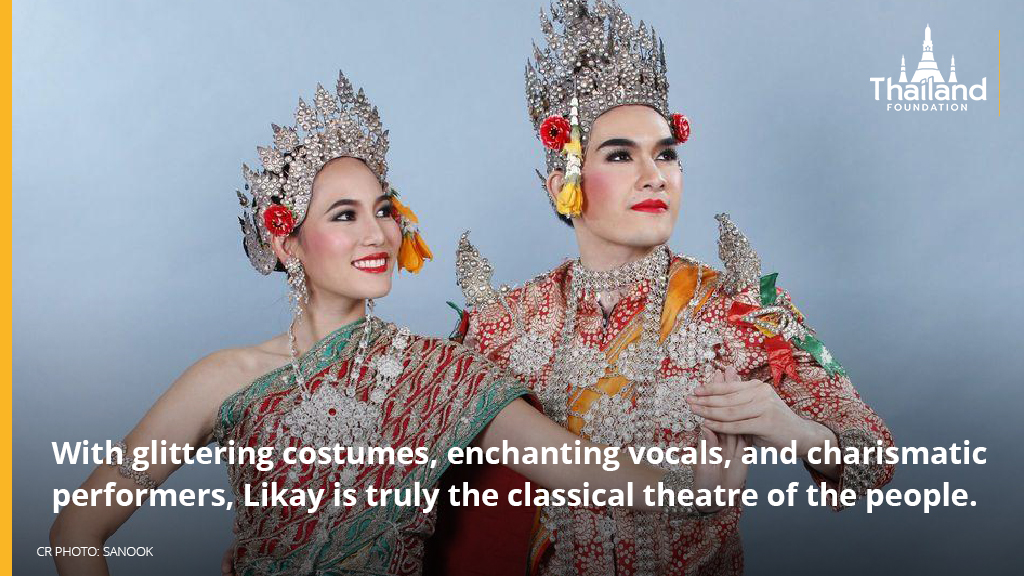
What is Likay?
Likay [ลิเก] is the most famous form of Thai traditional entertainment. For those who have never seen Likay, one might consider it a type of performance arts on the same level as opera or Broadway, but the costumes, the dance and the vocal techniques are completely different. Likay originated in the Ayutthaya period (1351-1767), became widely known in Early Rattanakosin (1782-1868), and remains unfailingly popular today. At annual events, temple fairs, or other festive occasions, Likay performers in glittering costumes beautifully sing their parts in rhymes and dance gracefully to Thai melodies on the stage. The audience below cheers when their favorite actors show up or laugh during humorous conversations.
What is the charm that keeps Likay, not just surviving, but growing and improving? Let’s learn the history of this Thai stage play from the beginning.
The History of Likay
Likay has its roots in the Islamic prayer chant. The word “Likay” is derived from Persian (ذکر ) and Arabic (ذِكْر ) meaning the recitation of the hymns of Allah. There are two theories concerning the entry of Likay-like art to Thailand. The first one believes that Shia Muslims from Persia brought the Likay chant to the kingdom during the reign of King Rama II (1809-1824). Later, the chant was rearranged into songs with Thai lyrics performed alongside a puppet performance. Another theory states that Malay Muslims were the ones who brought Likay to Thailand during the reign of King Rama III (1824-1851).
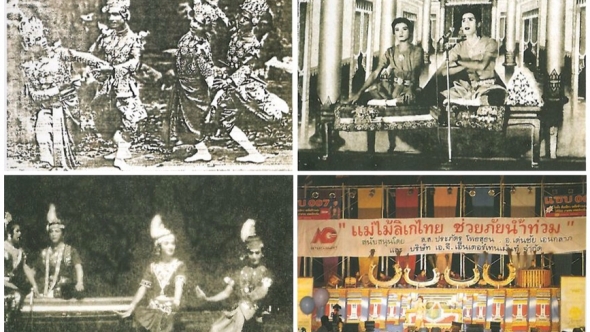 (Photo credit: https://www.trueplookpanya.com/blog/content/58290)
(Photo credit: https://www.trueplookpanya.com/blog/content/58290)
The Six Generations of Likay
The development of Likay can be divided into 6 periods.
- Likay Suad Khaek (chanting in the Malay language) [ลิเกสวดแขก]
When Thai Muslims from the south traveled to Bangkok in the reign of King Rama III, they brought with them a prayer chant in Malay, the tradition of poem improvisation called “pantun” or “likay banton,” and tambourines. Later, when Thai lyrics were written, the tambourins were replaced by the Piphat band (a Thai music ensemble consisting of Thai oboes and percussions), and a section of poem battle was added.
- Likay Awk Phasa (Likay that plays with foreign languages) [ลิเกออกภาษา]
Likay Awk Phasa combined with a short skit, melodies, vocal techniques, and words of foreign cultures such as Mon, Chinese, Lao, Vietnamese, Burmese, Cambodian, Japanese, Western, Javanese, and Indian).
- Likay Song-khrueang (Decorated Likay) [ลิเกทรงเครื่อง]
This era was characterized by an elegant and flamboyant costume. The Decorated Likay became popular across the central region and many Likay theaters were opened, offering performances of royal theatrical plays. The composition of the play in this era saw the transformation of the serious chanting in Malay into a humorous prelude to bless the audience and boost the actors’ morale. A short skit of Likay Awk Phasa in the previous era was extended and became the main part of the show.
Another improvement for the Likay art happened in 1942 when a Royal Decree on the Performing Arts was promulgated, requiring all Thai performers to pass the performance arts examination organized by the Fine Arts Department in order to obtain artist identification cards, and only those with the cards were recognized as professional performers.
- Likay Luk Bot (Simple-dressed Likay) [ลิเกลูกบท]
This period lasted for ten years during World War II. Due to the depressed economy, the costume of the Likay performers had to be simpler, but that did not affect the popularity of the show. The audience also saw more original scripts being performed in this period.
- Diamond Likay [ลิเกเพชร]
At the end of World War II, luxury returned to the garments of Likay performers. Diamonds were the main gemstone used in those days. We saw diamond embroidery vests, diamond headbands, diamond belts, etc. To modernize Likay, other types of performances and techniques were incorporated, such as popular folk songs and 3D backdrops.
- Floating Likay (the modern era) [ลิเกลอยฟ้า]
The change in this era is a bigger and higher stage so that the Piphat ensemble is clearly visible. The stage roof is removed, making it seem as though the Likay troupe were floating in the sky. Modern sound systems help Likay compete with the performances of country music bands and international Thai bands. We can say that today’s Likay is similar to a concert to a certain degree.
There are two sizes of Likay performances: small theater and big theater. The small theater consists of 7-15 performers and a couple of hero and heroine. The big theater can have two pairs of heroines and heroines.
Singing
Likay tells a story in a fast-paced manner with comedic elements. The show begins with a prelude, followed by Wai Khru (paying respect to art teachers), Awk Khaek (a skit in the Malay style) to inform the audience about the show and to remember that Likay branched out from the Persian and Malay cultures, and then the main play.
Instead of speaking to narrate a story, Likay performers sing poems. They must be able to remember the poems precisely. However, memorization is just a basic skill of Likay actors. The key skill of elite performers is improvisation for both the poems and the dance.
Singing poems is accompanied by the melodies and rhythms of traditional Thai songs, for instance Kratai Ten (dancing rabbit) and Hong Thong (golden swan), but these songs are usually difficult to sing. Therefore, a new tune was composed particularly for Likay called “Rajanikloeng” (ราชนิเกลิง) to achieve the compatibility between the music and the poem, and help performers sing in longer phrases and rhyme more easily thanks to the same vowel shared by the last syllable of every Ranikloeng verse.
Likay performers will have to sing in a full, high-pitched voice with a little nasal tone, colored with the Thai style tremolo and vibrato.
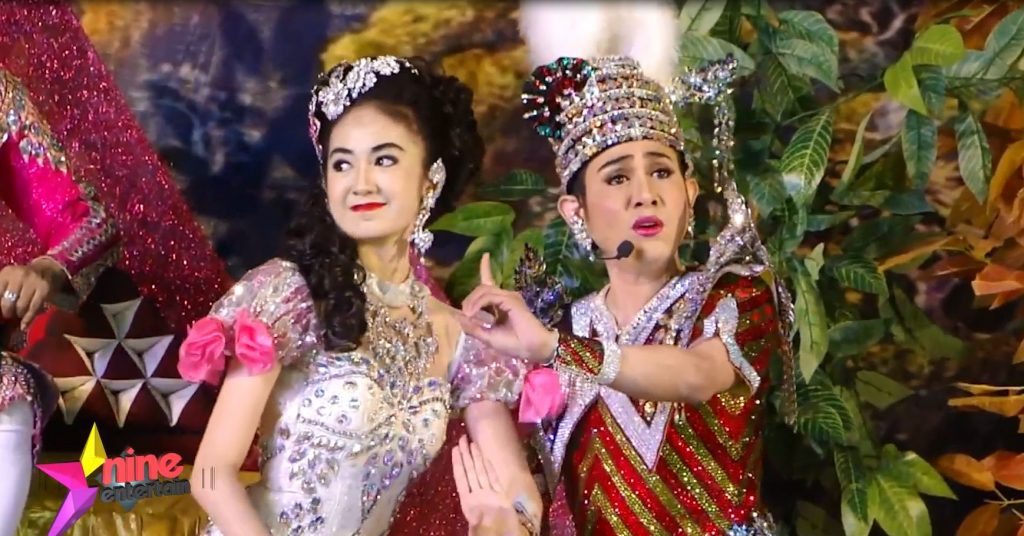 (Photo credit: https://nineentertain.mcot.net/thai-entertainment-106111)
(Photo credit: https://nineentertain.mcot.net/thai-entertainment-106111)
Dance
The dance moves in Likay are not fixed. There’s no specific pose to convey a certain meaning although there are about ten simple basic postures for expressing love, sadness, crying, pointing, coming, going, dying, helping, etc. Likay performers must, however, know how to walk and move their arms and hands in a Likay fashion to allow graceful and meaningful movement on the stage. Nevertheless, performers can resort to a standard dance move set created by the Fine Arts Department of Thailand.
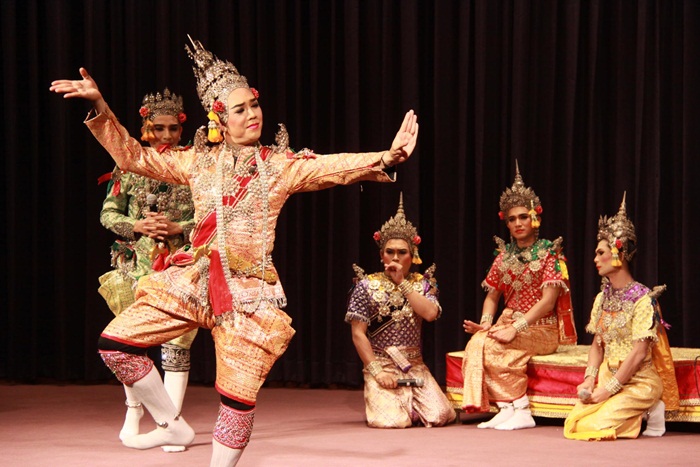 (Photo credit: https://m.mgronline.com/qol/detail/9620000075175)
(Photo credit: https://m.mgronline.com/qol/detail/9620000075175)
Costume and Set
- Costume
As mentioned in the six generations of Likay, the costumes of Likay can be grouped into three types. The first one is the decorated Likay dresses similar to the apparel of the royal family and noblemen, popular in the reign of King Rama V (1868-1910). The second type is the simple-dressed Likay, reflecting the difficult time of World War II. And the third type is the diamond dress which can cost thousands of dollars per piece. Performers do not wear shoes, only long white socks. Since Likay is a nighttime performance, both male and female actors have to put on heavy makeup – false eyelashes, rich-colored lipstick and blush-on – to stand out against the strong stage lighting.
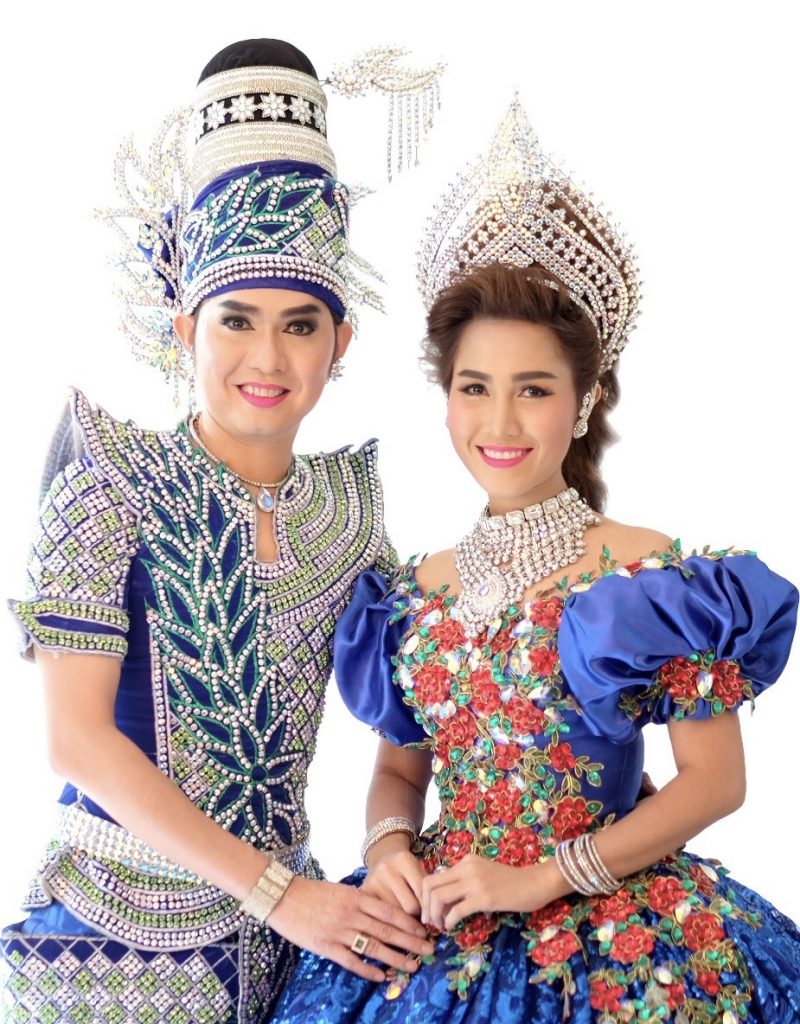 (Photo credit: http://www.salachalermkrung.com/?c=news&m=detail&cid=63)
(Photo credit: http://www.salachalermkrung.com/?c=news&m=detail&cid=63)
- Backdrop
Likay’s backdrop is a canvas painted with flashy colors. A single backdrop features either one layer of canvas as a background to depict a throne hall, or two 2 canvases each on the left and right side of the stage as the entrance and the exit of the performers. The single backdrop is commonly used for a one-night show.
A set backdrop consists of multiple canvases to represent different locations, for example, a throne hall, a city, a forest, or a cottage. Each set is attached to a bamboo rod above the stage and can be unfolded or rolled up. The set backdrop is used for a months-long performance.
A 3D backdrop looks the most realistic, using many layers of canvas for one scene to create depth. This backdrop is used for a performance that viewers need to buy tickets, or a serial play that takes many nights to finish.
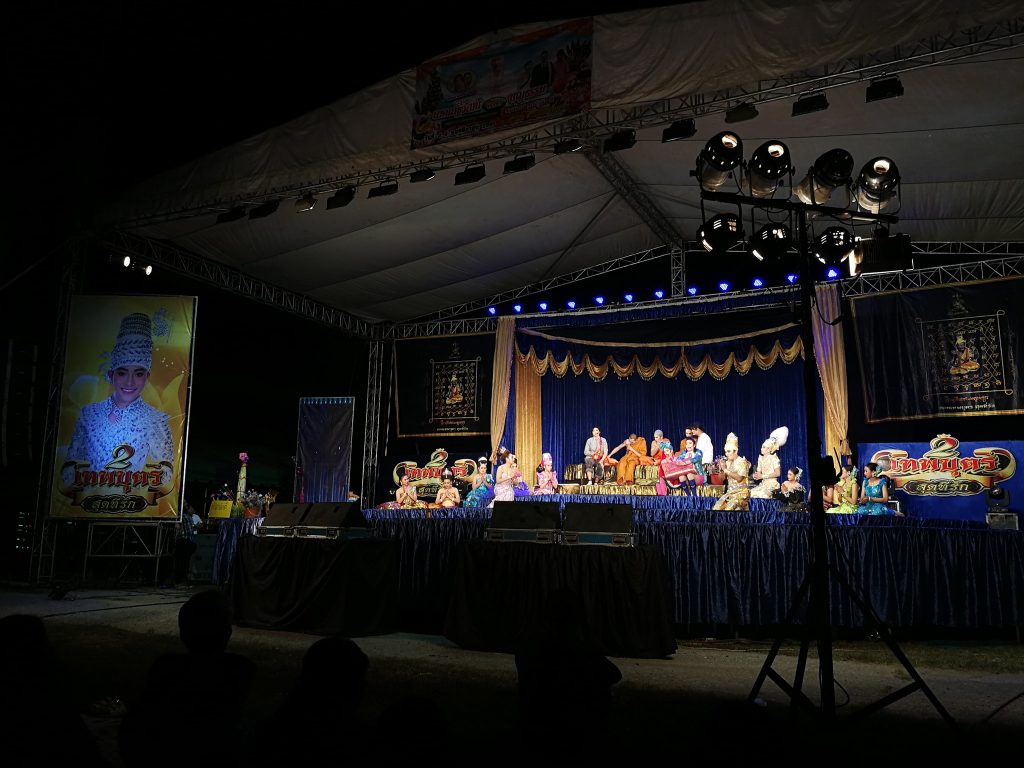 (Photo credit: https://www.baosamong.com/musical-folk-drama/)
(Photo credit: https://www.baosamong.com/musical-folk-drama/)
Likay Culture
Thanks to the improvisation skill of Likay performers, the plots can be as flexible as one wishes. As a Likay troupe travels to the venue, the troupe head will observe the local people’s lifestyle and taste, the environment, the economic condition, and then select the story that will best satisfy the audience.
- Mae Yok and fan club
And the audience who is the breath of all Likay troupes is the fans who call themselves Mae Yok (fans, mostly women, who like to provide financial support to Likay performers) and follow their favorite troupe wherever they perform to cheer them up and give extra income in the form of garlands adorned with banknotes. Mae is a Thai word for mother and Yok is to raise; together, it means a mother who raises. The friendship between some Mae Yoks and the Likay troupe can be ten-years long. Both parties respect each other like family members. Nowadays, there are also online Likay fan clubs where fans can discuss, exchange, update news and organize a trip to see Likay.
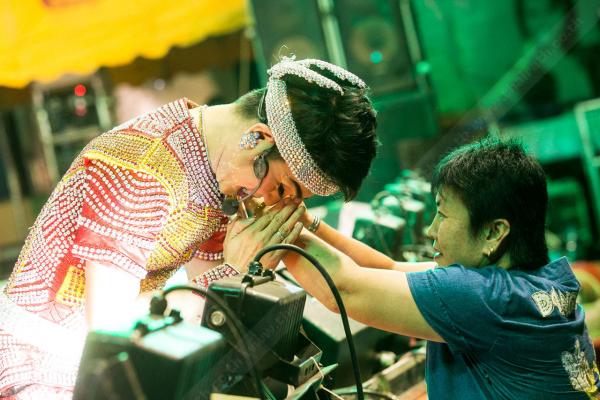 (Photo credit: https://www.thairath.co.th/content/539428)
(Photo credit: https://www.thairath.co.th/content/539428)
- Likay troupes and Likay performers
The Likay troupe originally consisted of all male actors, but the troupe of Mr. Dokdin Suasa-nga (1858-1934) was the first to welcome an actress, who was his own daughter to play as the heroine of the troupe. Other troupes followed suit. Some troupes even let women to play heroes. Later, Mr. Homhuan Naksiri (1899-1978), a disciple of Mr. Suasa-nga, assigned actors and actresses to the roles of their corresponding sexes, and became so famous that the troupe had to split into nine groups to perform simultaneously in Bangkok and provinces. Over the time, students of Mr. Naksiri formed 35 more troupes and included “Hom Huan Disciple” as part of their troupes’ names.
When television found its place in the Thai society, Likay programs were born, followed by a new generation of Likay troupes and child Likay performers, some of whom have become major stars in other fields of entertainment as well. For instance, Mr. Chaiya Mitchai grew up in a Likay family since his grandparents’ generation and began performing at the age of 10 in the orphan Likay troupe of Wat Sakaeo Temple. Gaining immense popularity, he formed his own troupe, alongside being an actor and Thai folk song singer. Another millionaire Likay actor is Mr. Suthirat Wongthewan from the Thaweep-Chainarong Wongthewan Troupe. He performed since the age of 13 and went on to be a singer. Both are still dearly loved by the Thai audience.
In the era of social media, another millionaire Likay hero emerged, Mr. Sornram Aneklap of the Sornram-Namphet Troupe. From the age of 6 until 25, he has been entertaining the audience on the stage and online. His troupe always welcomes new hopeful performers.
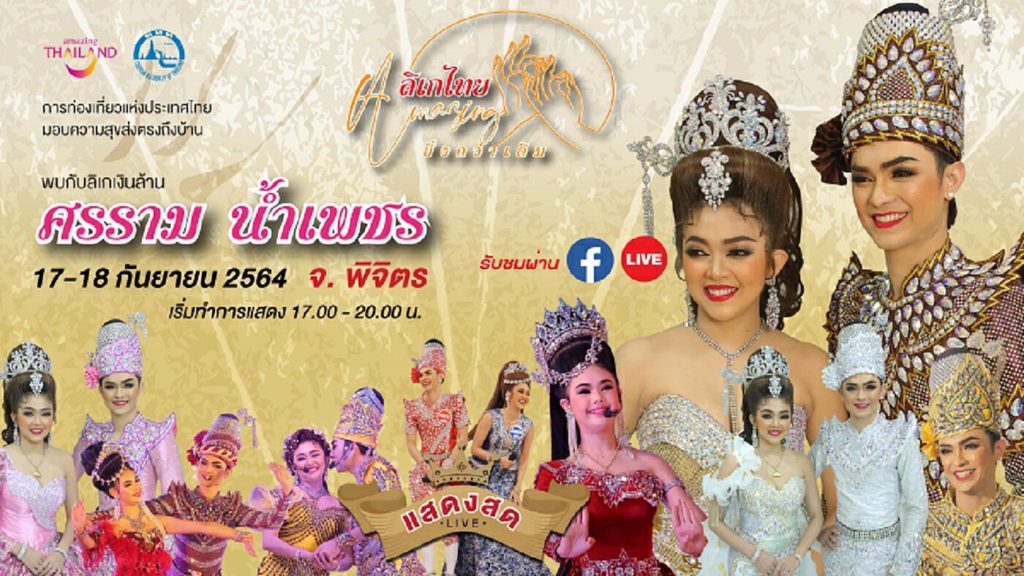 (Photo credit: https://www.bangkokbiznews.com/pr-news/biz2u/959890)
(Photo credit: https://www.bangkokbiznews.com/pr-news/biz2u/959890)
Likay as a Mirror of Thai Values
From the Islamic roots to Thai performance arts, Likay is another living proof of the openness of the Thai people to foreign cultures, new technologies, the competitive nature of the entertainment industry, and media consumption behaviors of the audience.
Like every form of Thai classic art, a Likay performance begins with Wai Khru to praise art teachers and gods of arts and ask them to protect the troupe and bring success to the performance. Established Likay troupes will organize an annual Wai Khru which is open to the public to make merit and express gratitude to Likay masters together.
Likay is an art that embraces change. From the very beginning, performers would align the tone and the story of their show with the preference of the audience, making each performance unique and relatable. Not to mention the talents and aptitudes of different artists that paint various shades of beauty and charm to the art form. The emergence of new Likay troupes reflects the enduring popularity of the show. And besides watching the performances live onsite, the audience can now enjoy Likay on television and social media to their hearts’ content.
Sources
http://magazine.culture.go.th/2016/1/mobile/index.html#p=28
https://www.m-culture.go.th/nakhonsawan/ewt_news.php?nid=1104&filename=index
https://sites.google.com/site/likaethai/pra-3eth-khxng-like
http://saisampan.net/index.php?topic=59592.0;wap2
https://www.youtube.com/watch?v=E23MadYHRfw
https://www.youtube.com/watch?v=lz9BlrihFmM
_________________________________________________________________________
Author: Soonyata Mianlamai
23 June 2022


